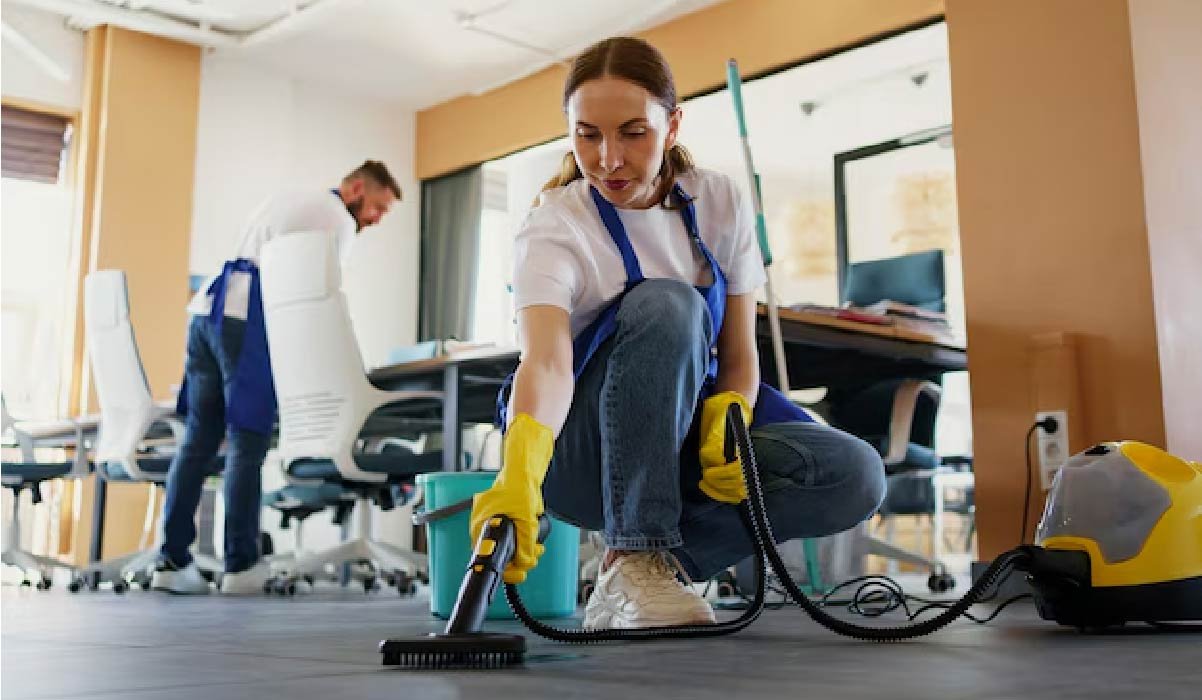Home Improvement
The Invisible Dangers That Lurk Behind a Clean Workplace

Hidden dangers can thrive in even the tidiest workplaces. These unseen risks can catch people off guard, turning a seemingly safe environment into a hazard zone. It’s easy to assume that cleanliness equals safety, but that’s not always the case. Hidden hazards can pose severe risks to health, productivity and reputation.
Learn about the unseen dangers lurking in your clean workspace and discover how to mitigate them.
A Clean Workplace Isn’t Always a Safe Workplace
A sparkling clean workplace might seem ideal. After all, it looks professional and feels inviting. But safety isn’t just about keeping things tidy. It’s about creating an environment free from hidden hazards—those risks that aren’t immediately obvious.
For instance, fresh-smelling air could contain harmful toxins or chemicals. Even clutter-free workstations might conceal improperly stored items or malfunctioning equipment. Focusing solely on surface cleanliness can lull people into a false sense of security. When no apparent issues are present, it’s easy to assume everything is fine. But in reality, problems may be lurking beneath the surface.
Workplaces must go beyond appearances to truly ensure safety. Regular inspections, comprehensive safety protocols and a proactive approach are critical. Cleanliness is a good starting point, but it’s not the finish line.
The Hidden Hazards in Everyday Maintenance
Routine maintenance is supposed to keep a workplace functional and safe. But even well-maintained spaces aren’t immune to hidden risks. Here are some common, seemingly insignificant things that cause the most trouble.
Oversights That Can Lead to Problems
Small cracks in flooring, loose screws on equipment or even peeling paint might seem trivial at first glance. However, these minor issues can grow into more considerable hazards over time. Cracked flooring, for example, can trip employees or clients, leading to injuries. Loose screws can cause machinery to malfunction, putting workers at risk.
Wear and Tear
Wear and tear is another problem that leads to many undetectable hazards. Machines that appear to work fine might have internal damage. Over time, parts can degrade, leading to sudden breakdowns or accidents. Electrical systems are particularly prone to hidden wear. Frayed wires or overloaded circuits might not be visible but can spark fires or cause power outages.
Addressing Maintenance Gaps
This is where training is crucial. Maintainance work inherently poses a greater risk to workers than more routine tasks. Maintenance safety training ensures maintenance workers understand the risks and safe systems of work. Risk assessment awareness can help catch problems early, improve safety and reduce long-term repair costs.
Unseen Threats to Health and Hygiene
When people think of workplace cleanliness, they often focus on visible dirt. But some of the most dangerous contaminants can’t be seen. Here are some of the common unseen threats:
Mould
Mold thrives in damp, poorly ventilated areas. It often grows out of sight—behind walls, under carpets or in HVAC systems. Even a small water leak can create the perfect environment for mould to flourish. The spores it releases can cause respiratory issues, allergies and even chronic illnesses.
Dust and Airborne Particles
Dust is another invisible health hazard. Fine particles can linger in the air, especially in poorly ventilated spaces. Over time, breathing in dust can lead to lung problems, irritate existing conditions like asthma or trigger allergic reactions.
Bacteria on Shared Surfaces
Workplaces are full of high-touch surfaces—doorknobs, keyboards, phones and desks. These surfaces can harbour harmful bacteria and viruses, spreading illnesses among employees. Even with regular cleaning, some microbes can persist, especially if cleaning methods are not thorough or consistent.
The Impact on Productivity
Unseen health hazards don’t just make people sick—they also hurt productivity. Employees who fall ill frequently miss work, which disrupts schedules and affects team performance. To combat these risks, workplaces should invest in deep cleaning routines, use air purifiers and conduct regular health inspections. Ensuring good air circulation and reducing dampness are also effective ways to minimise health hazards.
When Pests Go Undetected
Even the cleanest workplaces can attract pests. They slip through tiny openings, find shelter in dark corners and often go unnoticed until there’s a severe problem.
Subtle Signs of an Infestation
Pests leave clues, but they’re easy to miss. Droppings, gnawed materials or faint scratching sounds might indicate a hidden infestation. Unusual smells, particularly in storage or kitchen areas, can also be a warning sign.
The Risks of Ignoring Pests
Pests aren’t just a nuisance—they’re a danger. Rodents can chew through wires, causing electrical fires. Cockroaches and ants contaminate food and spread bacteria. Termites can weaken wooden structures, creating safety hazards. Even the most minor pest problem can escalate quickly if left unchecked.
Prevention Is Key
The best way to tackle pests is to prevent them before they become a problem. Pest control training is essential for employees to recognise signs of infestation and know how to respond. Sealing entry points and maintaining clean storage areas are practical preventive steps. Professional inspections further ensure issues are caught early, protecting both the workplace and the company’s reputation.
Proactive Measures to Address Hidden Risks
The best way to handle hidden workplace dangers is to take a proactive approach. Waiting for problems to surface is a recipe for disaster. Instead, businesses should focus on prevention and early detection.
- Regular Inspections: Frequent inspections are crucial. These might include safety audits, air quality tests or pest control evaluations. Having a schedule for inspections ensures that every area is noticed.
- Preventive Strategies: Simple preventive measures can make a big difference. Fix minor problems, like cracks or leaks, as soon as they’re spotted. Clean and disinfect high-touch surfaces regularly. Ensure proper ventilation to keep air fresh and reduce moisture levels.
- Advanced Monitoring Tools: Technology can be a game-changer. Sensors can monitor air quality, detect unusual activity or identify structural weaknesses before they become serious. Investing in these tools might seem costly upfront, but the long-term savings are worth it.
- Professional Services: Sometimes, it’s best to call in the experts. Experienced cleaners, maintenance teams and pest control specialists have the knowledge and tools to effectively address hidden risks. Partnering with these services adds an extra layer of safety and confidence.
A clean workplace is just the beginning. Hidden dangers like maintenance issues, invisible contaminants and pests can threaten health, safety and productivity. The key to addressing these risks is a proactive approach with regular inspections, preventive measures and expert support. True safety lies beyond appearances—act now to safeguard your workplace and everyone in it.
For More Inform tion Visit Coopermagazine
-

 Celebrity11 months ago
Celebrity11 months agoWho Is Mallory Plotnik?: The Untold Story of Phil Wickham’s Wife
-

 Celebrity10 months ago
Celebrity10 months agoWho Is Allison Butler?: The Life and Influence of Kirk Herbstreit Wife
-

 Celebrity10 months ago
Celebrity10 months agoMeet Christina Erika Carandini Lee?: All You Need To Know Christopher Lee’s Daughter
-

 Celebrity9 months ago
Celebrity9 months agoWho Is Rebecca Sneed?: All You Need To Know About Lyle Menendez’s Wife
















